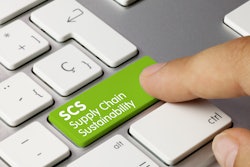
For supply chain executives, there’s a new triple bottom line: Cost, Care and Continuity.
Climate change is no longer just an abstract concern; it has become one of the most significant disruptions logistics leaders must navigate. Recent years have seen a string of extreme weather events, from hurricanes striking New York and New Jersey to wildfires ravaging the Pacific Northwest and unexpected snowstorms paralyzing Texas.
These incidents not only disrupt regional and national operations, but also highlight the pressing need for companies to confront their own contributions to climate change. According to the U.S. Environmental Protection Agency, over 90% of greenhouse gas emissions can be attributed to organizations' supply chains when considering their overall climate impacts.
In order to move towards a more sustainable future, supply chain leaders must proactively address these challenges by embracing the new triple bottom line of Cost, Care and Continuity, transforming their supply chain networks into resilient systems that mitigate climate risks, reduce costs and ensure continuity in tandem.
The key lies in implementing a flexible, “smart” fulfillment network —a distributed chain of locations seamlessly connected by software—that captures and analyzes critical data. This agile supply chain approach empowers businesses to optimize their operations, minimize risk and drive positive outcomes across the organization.
Reduce Costs and Boost Financial Agility
In today’s economy, success often boils down to smart capital deployment.
Costs are rising, sales channels are expanding, and expenses are ballooning. High fixed costs—owning, leasing, and operating fulfillment centers—can weigh on a company’s financial health, especially during periods of low revenue or economic downturns. These high fixed costs are part of why supply chain and logistics often account for more than 10% of the overall expenses for many companies, according to PwC.
Flexible network models allow companies to transform traditionally fixed supply chain costs like lease contracts, warehousing, and labor into variable ones. Because these models are designed to allow brands to pay for what they use, they help increase financial agility, flexibility and scalability. This kind of consumption-based pricing better aligns supply chain expenses with operational needs.
Strategic investment in technology that can optimally connect and track the activities of distributed warehouses frees up capital for other initiatives and fuels innovation. Without long-term contracts to maintain, operate, and manage space that may ultimately go unused, businesses add value through sustainability. This includes minimizing resource consumption and redirecting funds to additional supply chain sustainability impacts.
Improve Environmental Care and Sustainability
Logistics-related disruptions often occur in the delivery stage due to transportation volumes, large-scale distribution centers located far away from urban centers and over-reliance on potentially risky routes without alternatives. This can have a double negative effect on both the environment and the customer: increasing the use of gas and emissions to deliver items and potentially delaying delivery, especially in the era of heightened desire for one- and two-day delivery.
Flexible, distributed networks enable businesses to store and distribute products closer to end customers, reducing delivery distances and related carbon emissions. According to Accenture, merchants can reduce last-mile emissions by up to 26% through 2025 by leveraging “micro-fulfillment solutions.” These small, technology-enabled warehouses positioned closer to urban areas enable merchants to fulfill online orders faster and more sustainably.
With minimal upfront investment, network optimization can make a significant impact on environmental efforts. For example, my company worked with a merchant selling consumer packaged goods to optimize its fulfillment network from a single, highly unoptimized location (70% of orders shipping across the country to Zone 8) to three optimal locations.
This merchant reduced total shipment distances by 80%, saving an average of 1,481 miles and reducing carbon emissions by 83.5% per shipment. Over the course of a year, that’s the equivalent of taking nearly 15,000 cars off the road, according to the EPA.
Ensure Business Continuity, Mitigate Risk, Build Resilience
A distributed network not only cuts capex and helps the environment, it also mitigates risk over the long term.
Supply chain flexibility builds resilience, limiting the impact of individual disruptions across an entire network, and helping it recover more quickly when incidents do occur. And with the rise of sophisticated optimization solutions like digital twins, a smart network enables business continuity planning that helps merchants to avoid costly delays and operational setbacks.
Digital twins use advanced analytics and AI to create virtual replicas that simulate a supply chain’s performance, including complexities that could increase risks. By pinpointing where not only volatility and uncertainty lie but also opportunities for optimization across a network, digital twins enable scenario planning so merchants can make critical business decisions strategically instead of in the moment.
This flexibility to change course when issues arise through a smarter network creates agility for a business. With smart networks and digital twins used in tandem, merchants can understand in real-time their inventory levels, movement, and the status of goods across all storage facilities and centralize omnichannel connectivity to maintain business operations in any event or circumstance.
For instance, if a company offers a two-day shipping guarantee, but a snowstorm halts traffic throughout the Southeast, an intelligent fulfillment network enables the merchant to maintain their delivery promise. The business could route orders to the next most optimal locations with inventory in stock in order to keep goods moving.
According to BCG, early adopters of digital twins have realized sustainable inventory reductions of up to 5%, capex reductions of up to 10% and EBITDA improvements of 1 to 3 percentage points. They have also attained greater throughput and better service levels.
Supply Chains Supporting Cost, Care, Continuity
The world—and the weather—will never stop changing and throwing curveballs. The best thing businesses can do is prepare themselves, strategically planning with the triple bottom line of cost, care and continuity at the forefront.
By investing in technology, building flexible networks and prioritizing sustainability, companies can reduce costs, increase financial agility and ensure business continuity. Embracing the power of a flexible fulfillment network is not only a strategic move, but it is also an essential step towards securing a brighter future for both businesses and the planet.



















